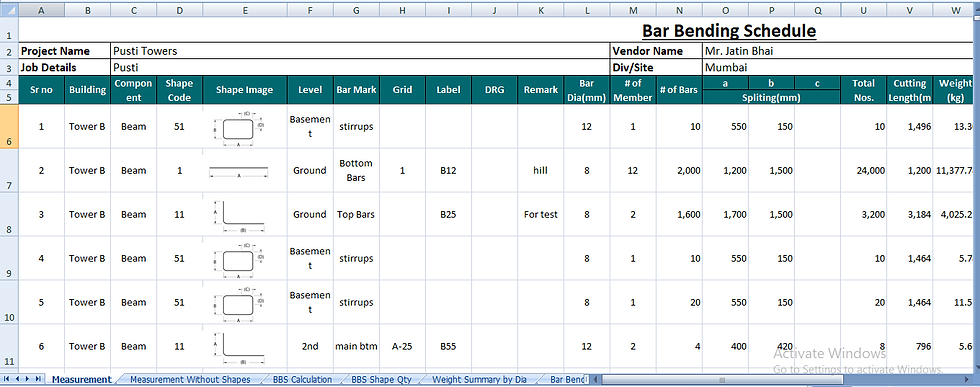Effective Waste Reduction Strategies for Sustainable Construction Projects
- kinjal shah
- Sep 29
- 3 min read
In the construction industry, waste generation is a pressing issue that affects both the environment and project budgets. With increasing awareness of sustainability, it is crucial for construction projects to adopt effective waste reduction strategies. In this post, we will explore practical methods that can help minimize waste, boost efficiency, and enhance sustainability in construction.
Understanding Construction Waste
Construction waste includes materials discarded during the building, renovation, or demolition of structures. Common types of waste include concrete, wood, metals, and packaging, which can significantly harm the environment if not managed properly.
Statistics show that the construction sector accounts for approximately 30% of global waste. Recognizing the sources and types of this waste is essential for construction professionals to implement targeted and effective waste reduction strategies.
Implementing a Waste Management Plan
A solid waste management plan is one of the first steps toward reducing waste on construction sites. This plan should detail the types of waste expected, disposal methods, and recycling options available.
A structured waste management plan helps identify potential waste reduction opportunities and set achievable goals. For example, a construction company can aim to divert 75% of its waste from landfills within a year. Training workers on proper waste segregation and disposal practices ensures everyone is aligned in reducing waste.

Emphasizing Material Efficiency
Material efficiency plays a vital role in waste reduction. By optimizing material use, construction teams can significantly cut down on waste.
For instance, techniques such as modular construction, where building components are prefabricated off-site, can lead to a 20-30% reduction in waste. Just-in-time delivery ensures that only necessary materials arrive at the site, decreasing the likelihood of excess materials. Utilizing Building Information Modeling (BIM) allows for precise calculations in the planning stages, minimizing waste before construction starts.
Recycling and Reusing Materials
Another valuable strategy for waste reduction is recycling and reusing materials. Many construction materials can be recycled, such as concrete, metals, and wood.
For example, concrete can be crushed and reused as a base material for new projects. Establishing partnerships with recycling facilities increases the likelihood of diverting materials from landfills. Furthermore, reusing materials from previous projects can lead to cost savings; reports show that companies can save around 30% on material costs by repurposing materials.

Educating and Training Workers
Education and training form the backbone of successful waste reduction strategies. Workers must understand the importance of reducing waste and be equipped with best practices for waste management.
Regular workshops can instill a culture of sustainability among the workforce. When workers comprehend the impact of their actions—like realizing that one ton of construction waste can produce about 400 kilograms of carbon dioxide—they are more likely to engage in waste-reducing practices.
Monitoring and Measuring Waste
Monitoring and measuring waste generation during construction is key to effectiveness. By tracking types and quantities of waste produced, teams can spot trends and identify areas needing improvement.
A waste tracking system can provide insights into waste generation patterns, allowing for timely adjustments. This data is invaluable for assessing the effectiveness of waste reduction strategies and guiding future projects.
Collaborating with Suppliers
Strong collaboration with suppliers is crucial for successful waste reduction. By working together, construction companies can ensure materials arrive in a manner that minimizes packaging waste.
Suppliers can often suggest more sustainable materials and practices. For instance, shifting to bulk deliveries can cut down on packaging waste significantly. These partnerships may also foster innovative solutions that benefit both parties while paving the way for a more sustainable construction process.
Utilizing Sustainable Materials
Using sustainable materials in construction projects actively reduces waste and promotes environmental responsibility. Sustainable materials are often sourced from renewable resources, resulting in a lesser environmental footprint than traditional materials.
Examples include recycled steel, bamboo, and reclaimed wood. By opting for these materials, construction companies can significantly reduce waste and improve the sustainability of their projects.

Building a Sustainable Future
Reducing waste in construction projects is essential for a sustainable future. By implementing these effective waste reduction strategies, construction companies can minimize their environmental impact, control costs, and contribute to a greener industry.
From creating comprehensive waste management plans to collaborating with suppliers and using sustainable materials, there are multiple ways to enhance waste reduction efforts. As the construction industry evolves, adopting these strategies is vital for achieving long-term sustainability and success.
By prioritizing waste reduction, construction professionals can lead the way toward a greener future, ensuring that projects meet today’s needs while protecting resources for generations to come.




Comments